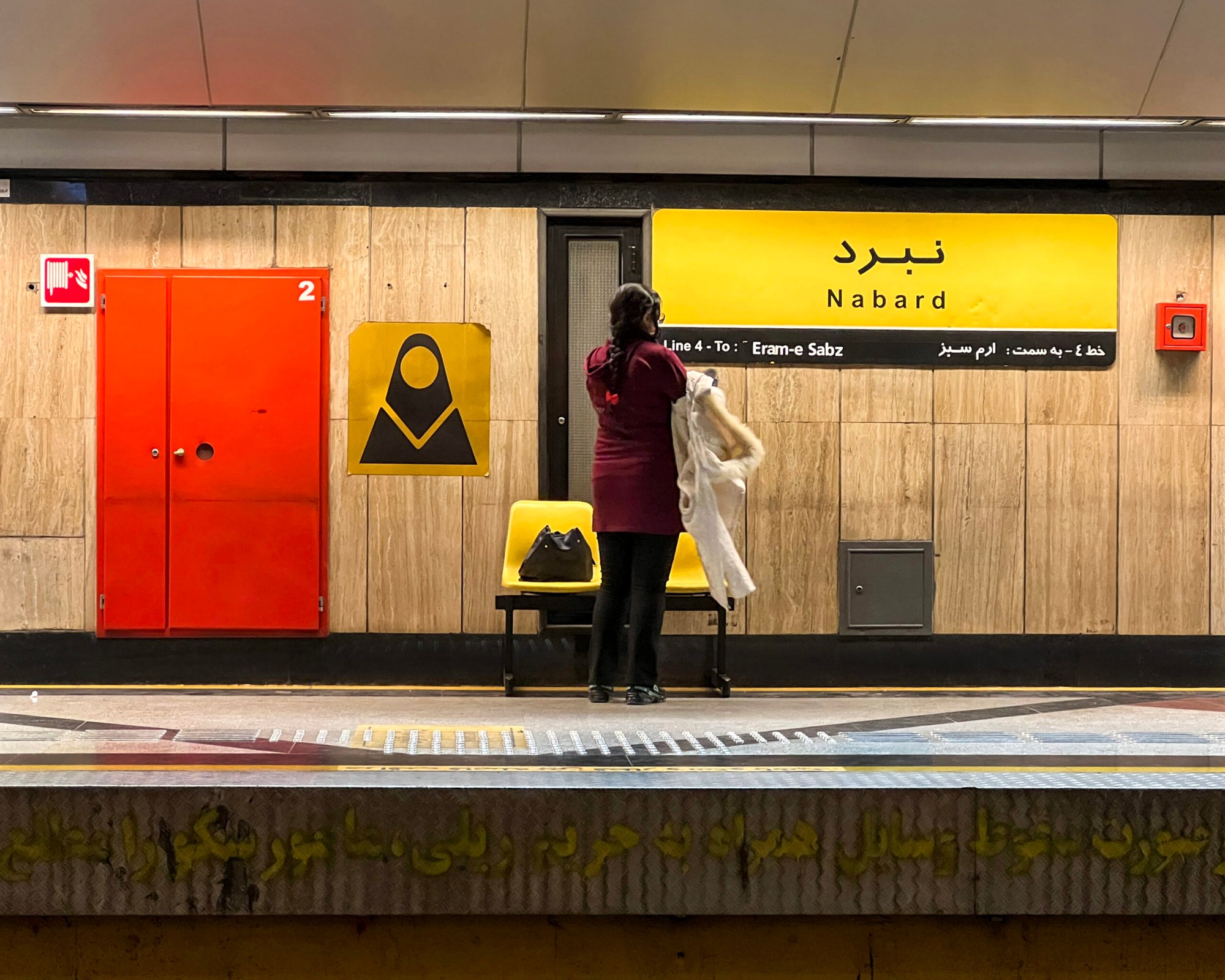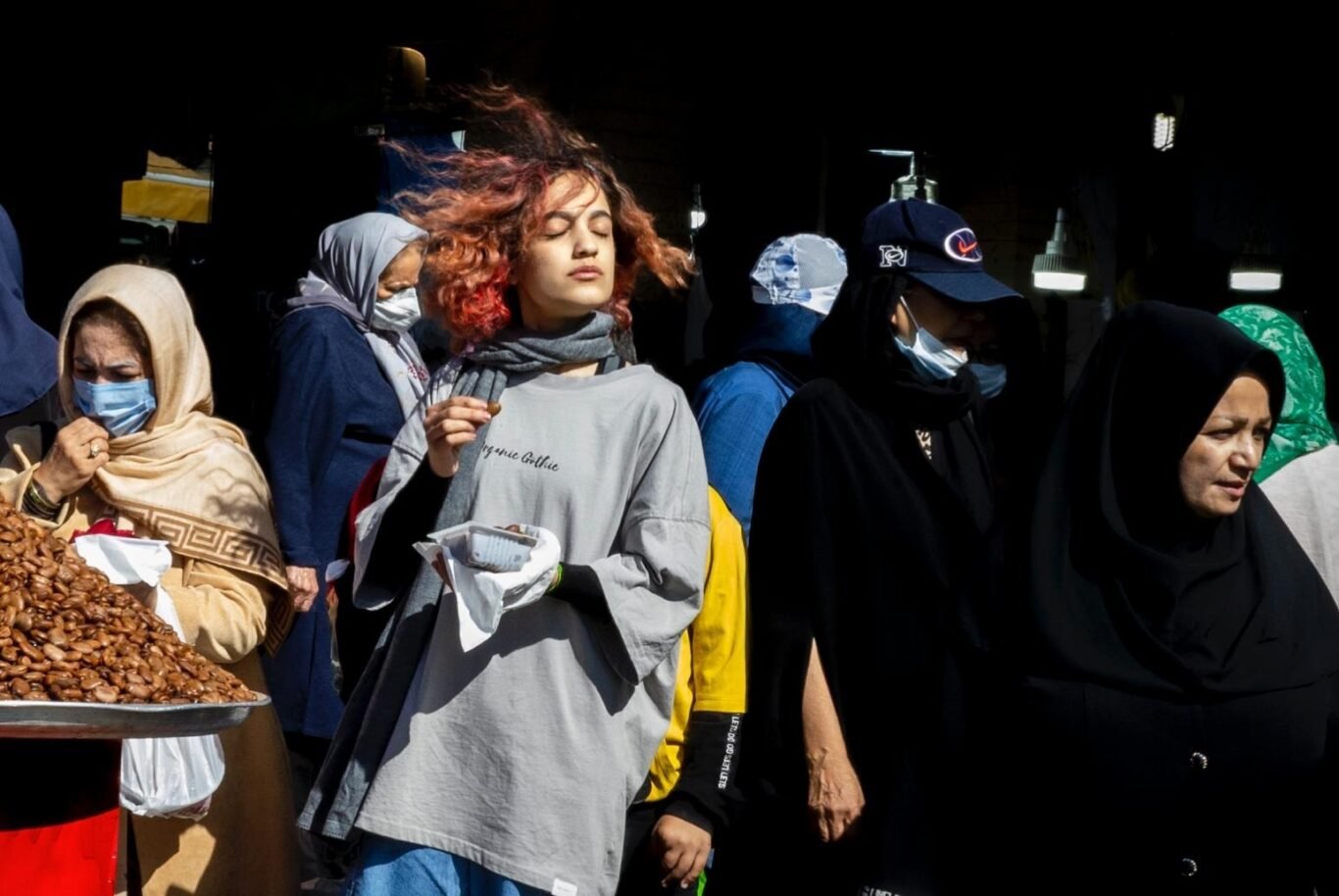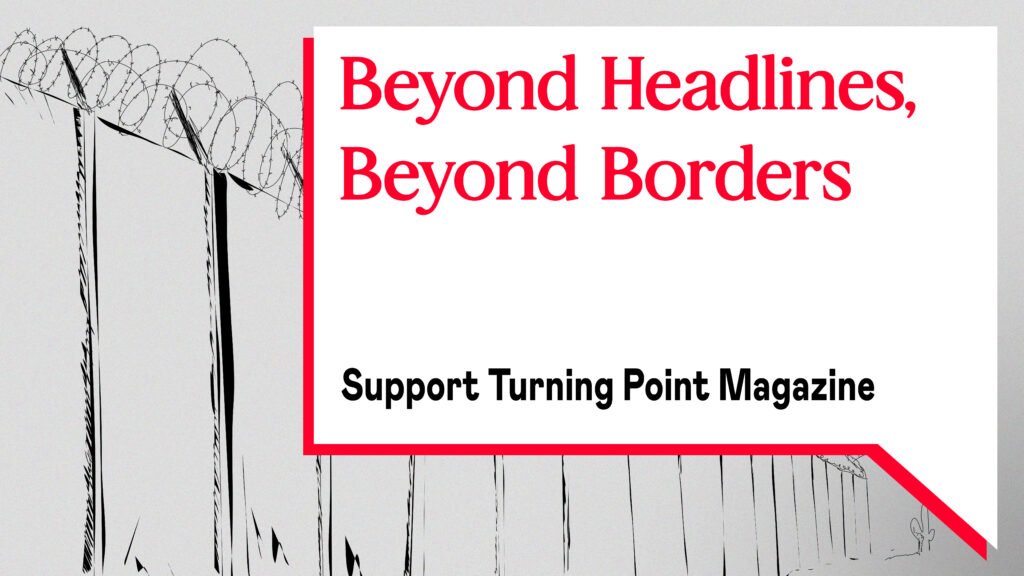Cover photo: As protests moved into the metro in January 2023, stations like this one in Tehran—Battle in English—became sites of resistance, where slogans were voiced and tensions ran high. On some days, security forces used tear gas inside the wagons to suppress protests. ©Ehsan Amiri Siavashani
It was a crisp, cool, Saturday, the kind that promises renewal. Barely two weeks had passed since the end of the New Year holidays in Iran, and Tehran was awakening to spring—the date was April 13, 2024.
A gentle breeze carried the scent of fresh blossoms as Simin*, a 38-year-old female entrepreneur living in the capital, stepped into the morning light, her mind brimming with thoughts for a new start. “Fresh plans for this year, a new product maybe, it is going to be a wonderful year,” she daydreamed while faintly smiling. Comforted by all this positive energy, she inhaled the scent of the flowers she had picked up on her way home the night before. The last day of holiday, Simin knew she ought to return to her small herbal soap shop tomorrow. Standing by the window, she gazed at Gorgan Street, a central district of Tehran, where she lived with her mother Zina. With a deep breath, Simin absorbed the liveliness of the street below; of vendors arranging their stalls; children chasing after one another; and the distant hum of traffic. Before heading out, she switched on the television, letting the morning news play in the background. What she heard startled her.
“In response to public demand and in order to ensure the safety and comfort of women, as of today, the Police will implement the ‘Noor Campaign‘ in the city’s squares and passageways. Under this initiative, women dressed in inappropriate clothing and failing to observe Islamic hijab will be prevented from moving about.”
Simin had already heard rumors that something like this could happen, whispers no one wanted to believe, but now, hearing this news aloud and officially, her stomach tightened into a knot of unease.
“Would it be a war against our bodies?” she wondered, knowing that each new decree was another attempt to police women’s existence.
Simin was not the only one to worry. That day, millions of other women stepped out of their homes, carrying on their face the same unspoken fears of yet another oppressive initiative. This time, it was ironically called the Noor Campaign—noor means light and wellbeing in the Persian language. Within a couple of days, social media was brimming with horrendous footage of female police officers dragging women into patrol vans; scenes reminiscent of the circumstances that led to the controversial death, in police custody, of a young woman over the hijab in 2022.
On September 13 of that year, 22-year-old Kurdish woman Mahsa Jina Amini, who was on a trip to Tehran with her family, was accosted by morality police outside a metro station and subsequently detained for what authorities described as wearing an “improper” hijab. This charge, loosely-defined and arbitrarily applied by police to stop and detain women for not complying with the country’s strict hijab rules. Mahsa Jina suspiciously fell into a coma on the day of the arrest and was hospitalized right after. She died in custody three days later in Kasra hospital in Tehran. Authorities claimed she had suffered a heart attack, but eyewitnesses, leaked reports, and international investigations strongly suggested she had succumbed to physical injuries sustained in the violent arrest.
The Morality Police, or Gasht-e Ershad, are known for forcefully arresting women on the street. The unit, often staffed with female officers, is tasked with monitoring and enforcing the mandatory hijab law in public spaces in Iran. Mahsa Jina’s tragic death in police custody led to an unprecedented anti-government uprising across Iran. On September 17, 2022, a group of mourners at Mahsa Jina’s funeral in the Kurdish city of Saqqez removed their scarves in protest against the compulsory hijab and chanted “Woman, Life, Freedom,” an originally Kurdish resistance slogan. The phrase was immediately adopted by Iranian protesters across the country as the protest motto. The nationwide uprising won support from politicians, activists and feminists around the world.
But the cost of resistance was dear… According to independent monitor Iran Human Rights, as of September 2023, at least 551 protesters, including 68 minors, were killed by security forces while out on the street. In 2022 and 2023, the regime executed eight people associated with the nationwide protests. Since then, an unknown number of dissidents remain in jail for supporting the protests. According to a Human Rights Watch report by September 2024, at least 25 women human rights defenders associated with the Woman, Life, Freedom movement were behind bars, with many more facing imminent arrest following courts and appeals hearings.
Against Historical Erasure
From the dawn of the 1979 Islamic revolution in Iran to today’s digital battlegrounds, Iranian women have been resisting for decades. On March 8, 1979, thousands of women took to the streets of Tehran to condemn the interim government’s increasingly restrictive measures against women, in particular the introduction of mandatory hijabs, that had happened a few days earlier. The protests lasted for six days and were met by violence from regime supporters.
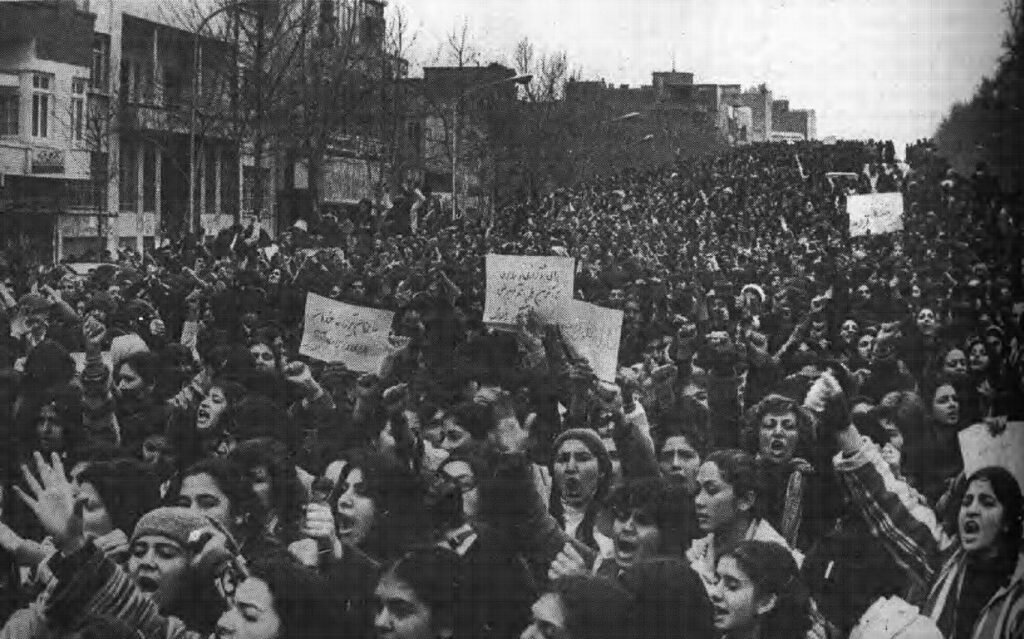
Ever since, resistance has morphed into different shapes but never subsided. In recent years, Iranian women have increasingly resisted the repressive laws imposed by Islamic ideology, fighting for their fundamental rights and freedoms. Above all, the “Hijab and Chastity law”. First introduced in 2022 in response to the nationwide anti-hijab protests sparked by the death of Mahsa Jina Amini, the law criminalized hijab defiance, imposing severe penalties such as car confiscation and heavy fines on violators. After a series of legal back-and-forths and heated debates, it was eventually endorsed in September 2024 and sent to the government for implementation—much to the dismay of civil society. Eventually, under immense domestic resistance and international pressure, Iran’s Supreme National Security Council intervened and suspended the law that same month, marking a major victory for women’s civil disobedience in Iran. Yet, it would be naïve to consider such decisions a reversal of Iran’s broader policies regarding hijab. Compulsory hijab remains the law, rigorously enforced, especially in smaller cities—no great change happens overnight.
Measures like the Hijab and Chastity law have led to a surge in the arrest of women. The law has also expanded state surveillance, with traffic control cameras being used to identify women appearing in public without a hijab.
Beyond legal enforcement, the government has sought to discredit and stigmatize dissenters by labeling them as mentally unstable, portraying resistance as a sign of deviance rather than a demand for fundamental rights. These tactics reflect the regime’s desperate attempts to quell the women’s movement and maintain control over their bodies.
While the Woman, Life, Freedom movement was definitely a turning point for this struggle, Iranian women continue their fight today. Outside of the international limelight, these women courageously turn their own bodies into powerful symbols of defiance. Their resistance is not just about rejecting compulsory hijab or reclaiming civil rights, it is a declaration of independence, dignity, and the irreversible taste of freedom. The female body, long subjected to state and societal control, has become both a battleground and a weapon—a force that no decree or measure of repression can fully contain. When there is nothing left to lose, there is everything to fight for.
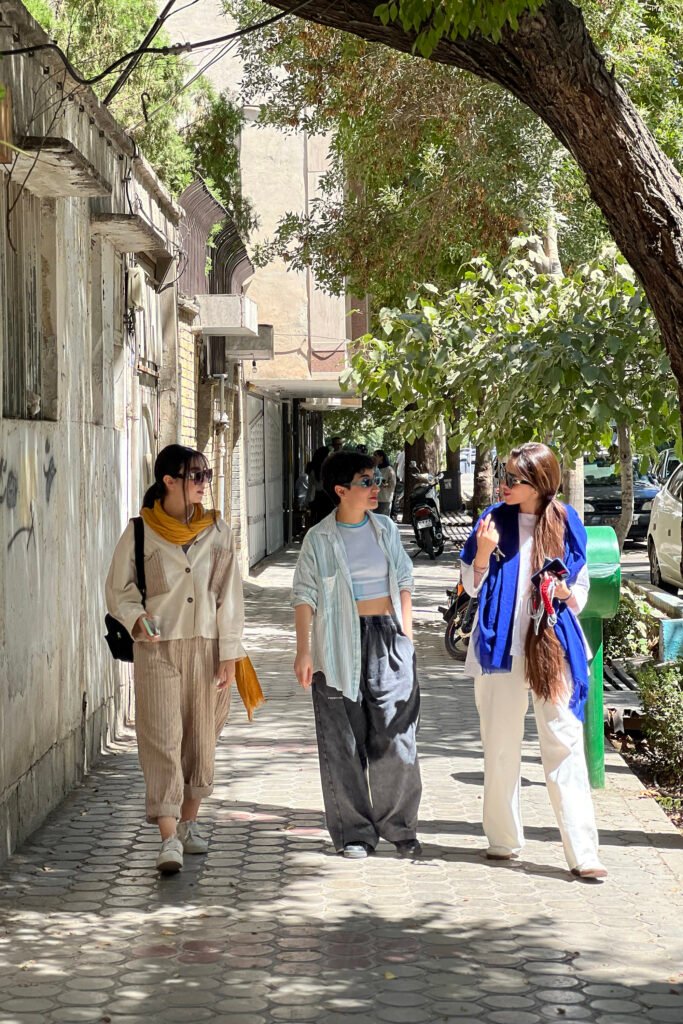
Taraneh Kouhestani, a clinical psychoanalyst specializing in trauma and identity in Tehran, reflects on the intersection of physicality and self-image. She posits that historically women were first censured through their bodies. Throughout the centuries, this censorship has played out in the negation of the presence of women in history. According to her, identity is inextricably defined by and through the body: “Body is the primal abode of identity! Who am I without a body? A disembodied object cannot lay claim to identity!”, says Taraneh to Turning Point Magazine. According to her, the struggle over bodily freedoms is an effort to reclaim identity and a lost historical status.
“The fight for the body is a collective attempt against the historical erasure of feminine agency. Iranian women are reclaiming this subjectivity and for that, they need to regain their bodies first!”
In response to this growing bodily defiance, the State has escalated use of physical violence against women and keeps introducing new restrictions on women’s bodies and rights.
Bodies in Solidarity: Shared Strategies for Reclaiming Public Spaces
A defining feature of this struggle is bodily solidarity, which refers to the shared act of using the body as a tool of resistance as physical defiance. Such practices take the form of everything from publicly unveiling, protesting, or through simply partaking in activities such as dancing and singing in public—both of which the Islamic regime has banned for women.
And let us remember that it would be a gross underestimation to attribute such practices of solidarity solely to recent years. Maryam*, now a 70-year-old retired teacher, recalls how she defied the strict dress codes imposed on women in the 80s. As a young teacher in the small city of Bandar Abbas, in the south of the country, instead of conforming to black chador— which remains the government’s desired form of hijab due to its complete body coverage—or the officially sanctioned colors, she decided to sew herself a blue manteau and wear it to school. Manteau is a long, loose robe that comes with pants.
“Soon after the revolution, the trouble began. A directive was issued ordering female teachers to either wear the chador or, if they refused, to limit their clothing to loose-fitting manteaus only in black, brown, navy, or gray. I thought, If I must wear a loose robe, so be it, but I will choose its color myself.”
Before long, other teachers at Maryam’s school followed her innovative idea and started to experiment with different colors and models for their manteaus. Though authorities repeatedly reprimanded them, Maryam and her colleagues refused to back down. Their quiet defiance within the limits of compulsory hijab spread to other teachers in other schools. Faced with indefatigable perseverance, authorities ultimately toned down their rigid dress code principles. In a matter of years, teachers were parading more varieties in color and style without receiving reprisals from high-ranking authorities.
From the early days of the 1979 Islamic revolution, the repressive tactics of the Iranian authorities have not only exposed the intensifying pressure on women but also revealed the government’s deep-seated fear of the profound social transformations that Iranian women were beginning to achieve.
Some forty years on, small acts of defiance such as what Maryam and her colleagues did, have spread to other spheres of society, and are practiced in broader and more pronounced ways.
Alone or in groups, women now remove compulsory hijab in public spaces. A growing number of them refuse to wear scarves as they used to, and some simply try on new types of clothing—such as skirts and short trousers—creating powerful moments of civil disobedience. By making their unveiled and untraditional presence in public a daily practice, women have turned disobedience into a ritual of resistance against restrictive dress laws. Through ingenuous tactics they have come up with methods to make this bold move —appearing in public without a hijab despite the constant threat of surveillance, arrest, or harassment—less risky.

“Wrap your scarf around your neck… if you see them closing in, quickly pull it over your head, it’s safer this way,” suggests Simin’s mother, Zina, to her daughter every time she leaves home. Zina is acquainted with danger. As a housewife staying home for much of the day, she has repeatedly witnessed from her kitchen window how this simple hack helps women dodge the police. Actually, the loose scarf strategy is practiced by so many women. That is why in most of the photos taken on Iranian streets, women can be seen moving around without hijab but having their scarves around their necks.
Zina is not alone in her concerns. The younger generation in Iran, such as Missagh, who is a 19-year-old photography student from Tehran, share the same worries.
“Having your scarf within reach makes you less exposed because if [Morality Police] approach you, you can wear it and avoid being caught. You must make sure as much as possible you’re not arrested, to continue to fight, you need to be safe!” says Missagh to Turning Point Magazine. Speaking about her friends in two other cities of Esfahan and Mashhad, she insists they do the same, having herself avoided being arrested, “This allows you to go without a hijab but feel less at risk.”
Another group of women dare not wear the scarf at all. They don’t even carry it loosely: “I am not carrying the scarf, not even around my neck! I am fed-up with it and I rather risk being detained than wearing the scarf even around my neck!”, says Shila*, a 39-year-old accountant in the capital Tehran. Shila has been posting photos without hijab on her social media accounts. She believes the social attitude towards hijab has drastically changed within a few years and even the authorities have no other option but to face and accept these rapidly changing norms.
Beyond unveiling, Iranian women have wielded fashion as a weapon against the state’s rigid mandates. “I know [officials] still require you to wear a manteau when going to university or state organizations, but in everyday life, it’s totally out. I wear long-sleeve blouses and long skirts, no manteau anymore and definitely no chador!” emphasizes Negin, a 35-year-old artist from Yazd, a historically religious and conservative city in central Iran. Although the chador has traditionally been the dominant outfit for women in Yazd, Negin explains that it has undergone huge changes in recent years. Although seniors stick to it, younger generations openly defy hijab, a stark contradiction that sometimes leads to verbal confrontations between older and younger women in public spaces.
Social Media as a Political Tool
Social media has become a vital tool in amplifying resistance. By sharing videos and photos of themselves removing their hijabs or protesting, women have transformed individual acts of defiance into a collective movement and normalized practices of appearing publicly without a hijab.
Simin promotes her herbal soaps on Instagram and has an online shop. Despite the tight monitoring of social media by the police, Simin posts stories and videos without a hijab, flaunting her long black hair.
Many famous influencers receive threats to wear a hijab or have their accounts blocked. Once ordered, they must obey—Simin, however, has successfully dodged surveillance, at least so far.
“It’s because I don’t have too many followers. If I have more in the future, I might receive warnings like my other colleagues do. A friend of mine who holds baking workshops was warned against posting without a hijab, which she kind of haphazardly accepted by wearing a cap, so not fully covering her hair but at the same time not being without hijab!”
Beyond appearing without hijab, women also engage in other “banned” activities, such as singing and dancing. Under Islam, which is the governing principle of law in Iran, women are not allowed to sing or dance in public. Since Iranian authorities consider social media a form of public space, the ban extends to online platforms.
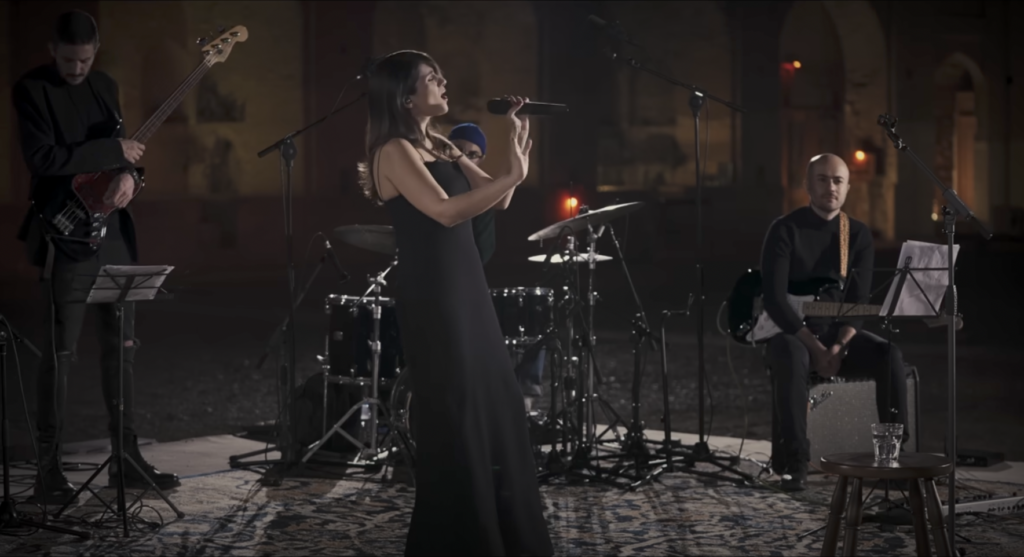
On December 12, 2024, Iranian singer Parastoo Ahmadi live-streamed a concert on YouTube that attracted millions of viewers within hours. Performing without a hijab and in an ancient abandoned caravanserai, she called the event “the hypothetical concert” hoping one day she would sing before an actual audience. Parastoo was consequently arrested along with two of her band members and released after a few days on bail. Since then, authorities have stepped up the crackdown on female singers. In recent weeks, several singers have been detained or summoned by officials, while their Instagram accounts have been shut down on orders from Iran’s Cyber Police, which monitors and tracks social media activities. Singers like Golsa Rahimzamani and Reyhanoo had their Instagram pages removed, while Bita Hajisadeghian was summoned in Isfahan and accused of “harming public decency.” Others, such as Hiwa Seyfzadeh, were arrested mid-performance. In August last year, street singer Zara Esmaili was detained after videos of her public singing went viral. Her current whereabouts remain unknown.
Despite the ramped up repressions, lesser-known and amateur singers continue to publish their clips online. These popular efforts make tracking and identifying female singers even harder.
Brothers and Sisters in Arms
Since the start of the Women, Life, Freedom movement, men have shown powerful and visible support for women in their struggle. During the 2022 protests, countless men took to the streets to stand by women and fight for their overlooked rights. Their presence challenged the stereotypes pushed by the Iranian government and many international media outlets, proving that Iranian society is not inherently pro-misogyny. Male awareness in supporting women’s rights continues to grow, showing a shift in societal attitudes.
This can be seen both in the physical and digital spaces. Many videos circulating on social media depict men coming to the aid of women, rescuing them from police violence. On platforms like Persian Twitter, which serves as a key space for dialogue and sharing perspectives within the Persian-speaking community, men spoke out about women’s rights, encouraging women to move on and emphasizing that women’s rights are inseparable from the rights of the entire society.
On March 6, 2025 , Iranian singer Mehdi Yarrahi was given 74 lashes as a verdict for the criminal case against him. This draconian measure triggered in turn a protest-song called Your Headscarf. He composed the track in solidarity with women and published it on the first anniversary of Mahsa Jina’s death in 2023. Yarrahi was also one of the male singers who supported women with a highly popular song titled Woman’s Anthem, released in 2022, at the beginning of the Iran uprising. As Iranian Nobel Peace Prize laureate Narges Mohammadi wrote on Instagram, the flogging was “revenge for his support of women.”
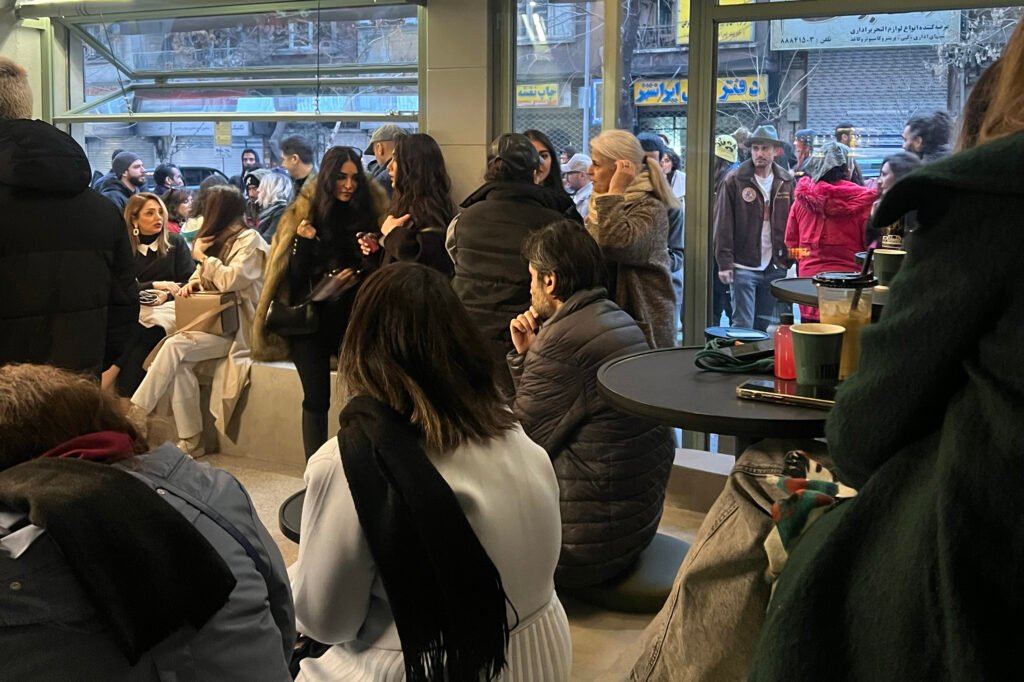
Many of these men have faced significant consequences for their actions. For example, Iranian police have repeatedly shut down public spaces such as restaurants, cafes, and galleries for for either their clients or staff not observing the compulsory hijab. In Iran’s fragile economic climate, even a temporary business closure can result in severe financial losses for the owners.
Saed* is one of them. He ran a small café in the southern city of Bandar Abbas. His café was forcibly closed multiple times for failing to enforce the hijab law, causing him a considerable financial loss. Despite knowing the risks, he never asked his customers to wear the hijab. Instead, he chose to accept the consequences of his defiance. But why was he willing to take such a risk?
“This small freedom is the result of spilled blood. For my part, I don’t want this movement to revert. I don’t believe in mandatory hijab, and I think if everyone continues, authorities won’t be able to challenge every single person who refuses to comply with hijab in the workplace. There must be perseverance.”
He was eventually forced to close his business due to repeated shutdowns over the hijab law, yet he has no regrets: “I stand with all the brave women in this fight, paying my share of the struggle,” he added.
Even without his café, Saed remains on the frontlines, marching alongside women in the streets, raising his voice, and standing firm in the fight for freedom.
“The Future Is a Triumphant Woman”
Almost two and a half years after the start of Woman, Life, Freedom, images from the streets of Iran confirm one undeniable truth: the bodily revolt is pressing ahead, unstoppable. This fight is not only waged in moments of mass protest—it is lived daily, in the smallest acts of defiance. Every uncovered head in the streets, every woman choosing not to wear the hijab despite the looming threat of arrest, every refusal to comply is a quiet yet radical form of resistance. It is a struggle that unfolds in marketplaces, in universities, in the aisles of supermarkets, and on the screens of social media—anywhere and everywhere Iranian women reclaim their right to exist on their own terms. This fight, however, extends far beyond Iran. From resistance against oppressive dress codes in Afghanistan; to the streets of Argentina, where women fight for the right to abortion; the ongoing struggle against gender-based violence in Mexico; to the feminist uprisings in France and Spain; women’s bodies remain a critical battleground for freedom. The refusal to submit is not just about the hijab but about autonomy, dignity, and power. And across all these movements, one truth remains constant: change is not given, it is taken. It is carved out through the persistence of those who refuse to be silenced, those who risk everything to assert their fundamental rights. And no woman fights alone. Solidarity is the foundation of every movement that challenges oppression—whether it’s Iranian women defying state control, Polish activists rallying for reproductive rights, or Sudanese women leading protests for democracy. Women’s freedom anywhere is tied to women’s freedom everywhere.
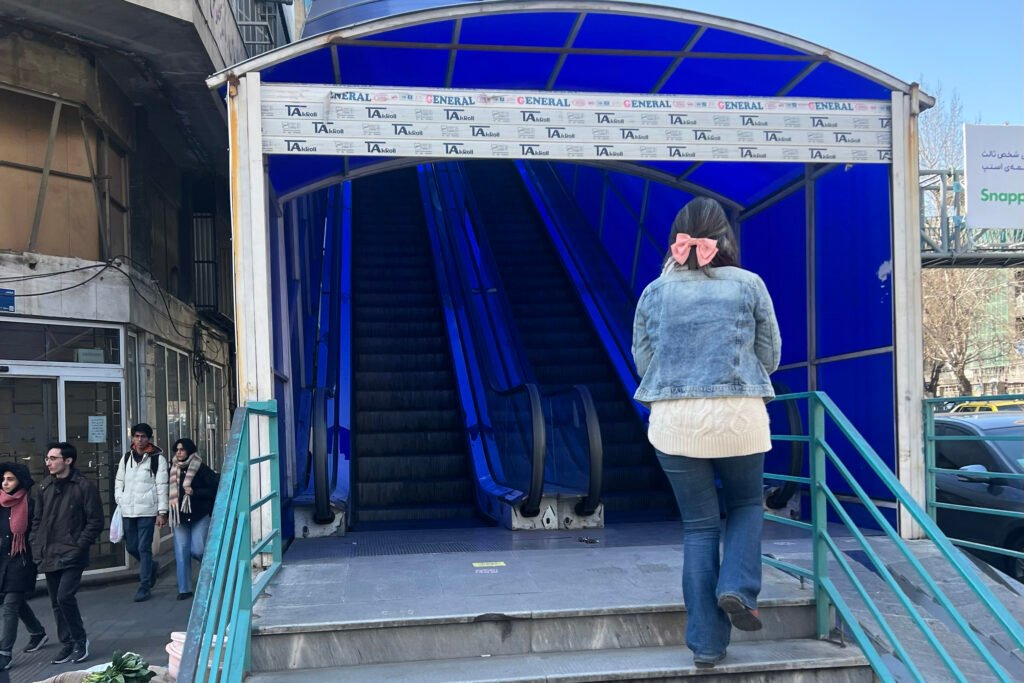
“It’s a river of no return, there will be no submission, Jina was a defining moment, we will march on, the streets are ours and we will claim more, I have no doubt that the future of Iran looks like a triumphant woman”, says Simin as she prepares for the new season in Iran.
And she is not alone. The women of Iran are not waiting for permission to be free. They are already living their freedom in acts both grand and small, in whispered acts of rebellion and in bold, fearless steps into the public eye. The battle is far from over, but the tide has turned. The future of Iran—and the world—belongs to those who dare to fight for it. And that future, as the women of Iran prove every day, is a triumphant woman.

Gaia Guatri
Gaia Guatri is an independent photojournalist and documentarian specializing in gender inequality, migration, and social justice, with a background in anthropology and international relations. She reports across Europe, China, and Southeast Asia. She collaborates with global media outlets like The Copenhagen Post, Weave News, and Pangyao Magazine to amplify local voices and bring human-centred stories to international audiences.

Shekufe Ranjbar
Shekufe Ranjbar is a multimedia journalist and researcher. She writes about culture and society. Her research is focused on journalism in repressive contexts.
